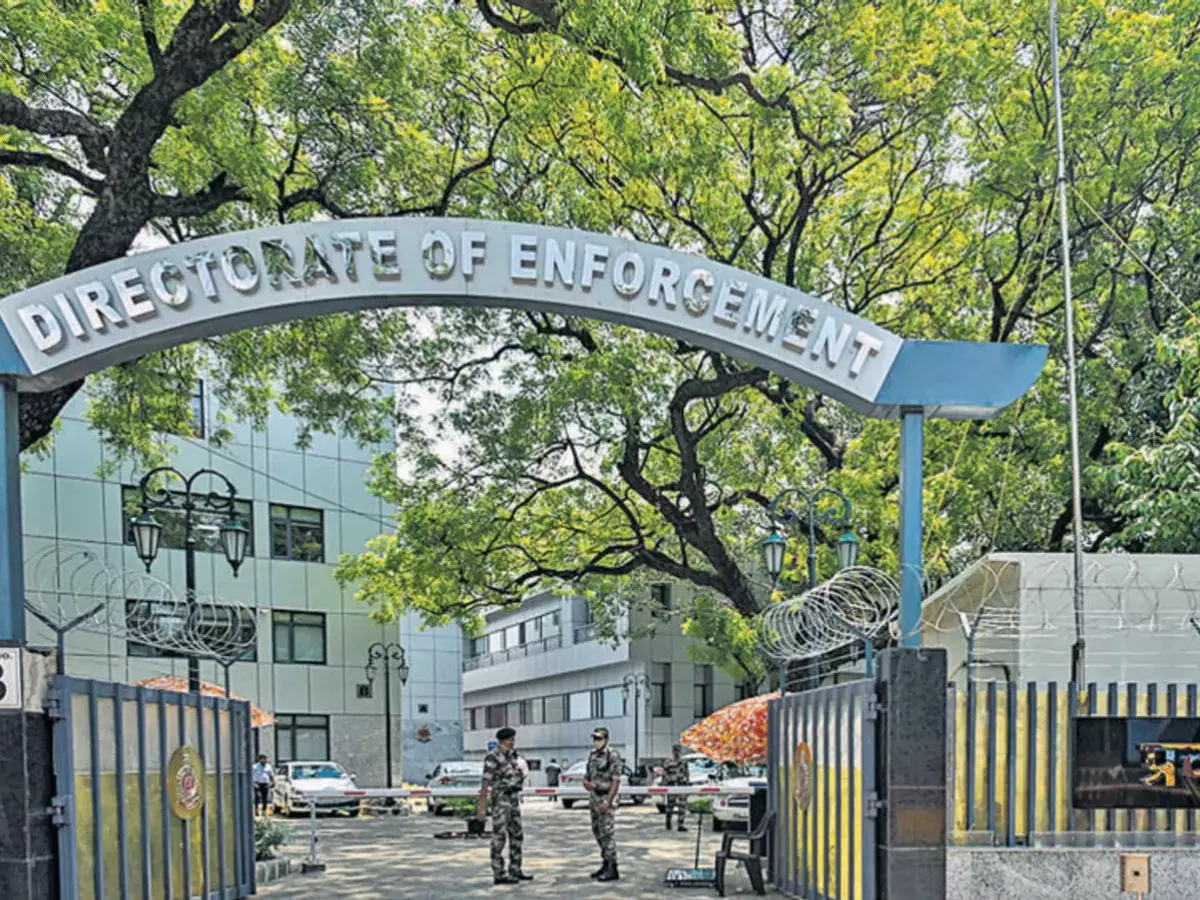Explained: How Powerful Is The Enforcement Directorate
The Prevention of Money Laundering Act (PMLA) 2002's provisions were upheld by the Supreme Court on Wednesday. The court noted that the Enforcement Directorate (ED) has the ability to arrest, connect, search, and seize. With this recent news in context, let us know more about the Enforcement Directorate.

The Prevention of Money Laundering Act (PMLA) 2002's provisions were upheld by the Supreme Court on Wednesday. The court noted that the Enforcement Directorate (ED) has the ability to arrest, connect, search, and seize.
 TOI
TOI
With this recent news in context, let us know more about the Enforcement Directorate.
What is the Enforcement Directorate?
Investigations into economic crimes and violations of foreign exchange legislation are the responsibility of the ED. Over time, its structure, standing within the government, and range of responsibilities have changed and grown.
 economictimes
economictimes
In 1956, it was established as an "Enforcement Unit" within the Ministry of Finance's Department of Economic Affairs. In 1957, it was called "Enforcement Directorate." Under the Foreign Exchange Regulation Act of 1947 (FERA '47), it initially handled infractions of the Exchange Control Laws.
Initially, it had two subsidiaries in Bombay (now Mumbai) and Calcutta (now Kolkata) in addition to its headquarters in Delhi . Another branch was added in Madras (now Chennai) in 1957. According to the organisational structure on its website, the organisation has now grown to include 39 zones.
ED's administrative authority was given to the Department of Revenue in 1960. The Department of Personnel and Administrative Reforms had administrative control of ED from 1973 to 1977.
The laws ED deals with
 Pexels/Representational Image
Pexels/Representational Image
1. The Prevention of Money Laundering Act, 2002 (PMLA): It is a criminal law to prevent money laundering and to provide for confiscation of property involved in money laundering.
2. The Foreign Exchange Management Act, 1999 (FEMA): It is a civil law dealing with foreign exchange market in India. "ED has been given the responsibility to conduct investigation into suspected contraventions of foreign exchange laws and regulations, to adjudicate and impose penalties on those adjudged to have contravened the law," as per its website.
3. The Fugitive Economic Offenders Act, 2018 (FEOA): This law deals with Indian offenders who leave India to escape laws. This allows ED to attach properties of fugitive offenders who have escaped India.
4. Conservation of Foreign Exchange and Prevention of Smuggling Activities Act, 1974 (COFEPOSA): The ED is the sponsoring agency under COFEPOSA. Under this law, the ED is empowered to sponsor cases of preventive detention with regard to contraventions of FEMA, according to its website.
What is the recent case?
A number of accused have submitted almost 250 petitions, challenging many parts of the PMLA. The arguments questioned the ED's authority to search, seize, and attach property; the burden of proof on the accused; and the legitimacy of comments made to the ED that were used as evidence against them, which, according to the petitioners, was unlawful because ED officers are police.
 TOI/Representational Image
TOI/Representational Image
Additionally, the petitioners asserted a right to receive a copy of the Enforcement Case Information Report (ECIR) and the contents of a First Information Report (FIR), both of which are not currently available. They further contended that since the average sentence for a crime under the PMLA is seven years, it couldn't be considered a serious crime and that the requirements for granting bail should be made more simple.
What were the clarifications made by the Supreme Court?
On the definition of cash laundering, the apex courtroom clarified that Section 3 of the PMLA, which states that anybody ¡°involved in any process or activity connected with the proceeds of crime and projecting it as untainted property¡± wants to be learn as anybody ¡°involved in any process or activity connected with the proceeds of crime or projecting it as untainted property.¡± This, the courtroom added, meant that even concealment, possession, acquisition or use of proceeds of crime will amount to cash laundering.
 BCCL
BCCL
Regarding the right to receive an ECIR, the SC ruled that, unlike a FIR, an ECIR is an internal document of the ED and as such, it is not necessary to provide the accused with access to it. The SC stated that "it is enough, if ED at the time of arrest, discloses the grounds of such arrest," but it added a caveat by noting that when the accused is brought before a court, it has the option to request the information to determine whether continued incarceration is necessary.
Regarding the legality of a confession made to the ED, the SC ruled that because ED officers are not police, the prohibition against self-incrimination does not apply because the threat of positive or actual arrest for providing false information cannot be used as a coercive measure to issue a press release. Furthermore, it ruled that the burden of proof for innocence is on the accused since it has a "reasonable nexus" with certain provisions of the PMLA.
